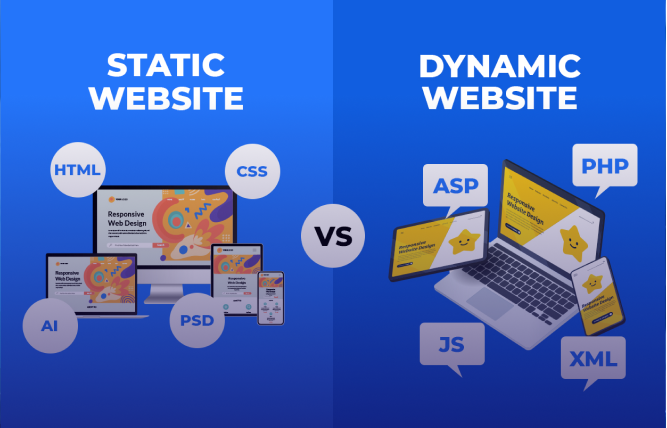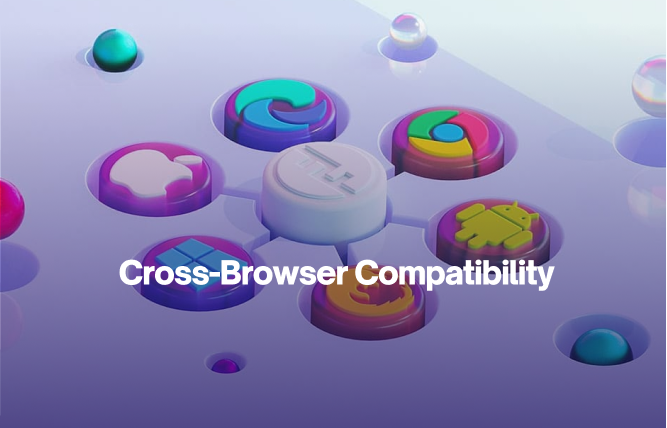Introduction
Pricing is a major concern for organisations that are looking to get a website developed. In this article we will be discussing the costs that go behind developing a custom website and what your organization can expect to pay.
Web development is an important part of businesses that are looking to expand online. There are several aspects that go into developing a successful website and each of these factors can become incrementally costly. According to WebFX, businesses have been seen spending upwards of $10,000 every year.
In this article, we will give you a break of the average pricing you can expect for web development based on the requirements, and tips of how you can optimise costs.
Web Development Pricing: What to Expect
Understanding the cost of web development is crucial for budgeting and planning. The costs can vary significantly based on the complexity, functionality, and type of website you need. Here’s a breakdown of the average costs associated with different types of web development projects:
| Type of Website | Description | Average Cost |
| Basic Website | A simple website with a few pages (e.g., home, about, contact) with basic functionality. | $1,000 – $5,000 |
| Small Business Website | A website for small businesses with custom design and essential features. | $5,000 – $10,000 |
| E-commerce Website | A website for online stores with product listings, shopping cart, and payment gateway. | $10,000 – $50,000 |
| Corporate Website | A website for large businesses with advanced features, custom design, and integration. | $20,000 – $100,000+ |
| Custom Web Application | A highly customised web application with specific functionalities and user interfaces. | $50,000 – $150,000+ |
| Content Management System | Websites with CMS platforms like WordPress, Joomla, or Drupal for easy content updates. | $10,000 – $50,000 |
| Landing Page | A single page designed for marketing campaigns and lead generation. | $500 – $2,500 |
| Mobile App Integration | Integrating mobile applications with a web platform for seamless user experience. | $10,000 – $100,000+ |
Factors Influencing the Cost
When getting a website developed, it is not as easy as the design of the website or how many pages it would have. There are several factors that play a part in the development. Let’s discuss some of these major factors:
Complexity and Functionality
The complexity and functionality of your website are primary cost drivers. Websites with basic functions, such as a simple blog or informational site, are less expensive compared to complex platforms like e-commerce stores, social networks, or web applications. Advanced features such as user accounts, payment systems, and interactive elements require more development time and resources, thereby increasing the cost.
Design Requirements
Design plays a crucial role in web development costs. Using pre-made templates is cost-effective and faster, but custom designs that reflect your unique brand identity are more expensive. Custom design work involves creating bespoke graphics, layouts, and user interfaces tailored to your specific needs, which requires more time and expertise from the design team.
Number of Pages
The number of pages on your website also impacts the cost. A larger site with many pages requires more content creation, design, and development work. Each page needs to be crafted to ensure it aligns with the overall website theme and meets usability standards, which adds to the development time and cost.
E-commerce Features
Adding e-commerce functionality to a website significantly raises the development cost. E-commerce sites need product pages, shopping carts, payment gateways, inventory management, and security features to protect user data. Integrating these components involves complex coding and compliance with regulations, increasing both the cost and development time.
Content Management System
A Content Management System (CMS) like WordPress, Joomla, or Drupal can make managing website content easier and more cost-effective in the long run. However, customising a CMS to meet your specific requirements, such as adding unique plugins or creating tailored content types, can add to the initial development costs.
Responsive Design
Ensuring your website is responsive—meaning it works well on all devices, including desktops, tablets, and smartphones—is essential in today’s mobile-first world. Responsive design requires additional development and testing to ensure the site adapts seamlessly across various screen sizes and resolutions, which can increase the cost.
SEO and Marketing Integration
Incorporating SEO and marketing tools into your website can drive traffic and improve visibility, but it adds to the development cost. This integration involves optimising site structure, metadata, and content for search engines, as well as setting up analytics and marketing automation tools. Effective SEO and marketing integration require specialised skills and ongoing updates, further influencing the overall cost.
Cost Effective Techniques for Web Development
Businesses are always looking for ways to minimise costs and when it comes to something like web development, it is always wise to look at strategies that will help bring the cost down. Following are some of the strategies that will help you cut down development costs.
Utilise Pre-Made Templates
Using pre-made templates instead of custom designs can significantly reduce costs. Many high-quality templates are available for various content management systems (CMS) like WordPress, Joomla, and Shopify. These templates are often customisable and can be tailored to fit your branding needs without the extensive time and expense of a completely custom design.
Opt for Open-Source Platforms
Open-source platforms like WordPress, Drupal, and Magento can help you save on licensing fees. These platforms have vast communities and numerous free plugins and themes that can be used to add functionality to your site without additional costs.
Focus on Essential Features
Prioritise essential features for the initial launch of your website. A Minimum Viable Product (MVP) approach ensures you only invest in necessary functionalities. Additional features can be added in later phases as your budget allows and as the need arises.
Use a Modular Approach
A modular approach to web development involves creating reusable components that can be used across different parts of your site. This method reduces development time and costs, as you are not building every feature from scratch for each new project or update.
Leverage Existing Plugins and Extensions
Instead of custom-coding every functionality, use existing plugins and extensions. Many open-source and premium plugins offer a wide range of functionalities, from SEO optimisation to e-commerce capabilities, at a fraction of the cost of custom development.
Outsource Strategically
Consider outsourcing parts of your web development project to freelancers or agencies in regions with lower labor costs. Platforms like Upwork, Fiverr, and Toptal can connect you with skilled developers who can deliver quality work at more competitive rates. Ensure to check reviews and past work to find reliable partners.
Implement Agile Methodologies
Using agile development methodologies can help manage costs by breaking the project into smaller, manageable sprints. This approach allows for regular assessments, adjustments, and prioritisation of tasks, ensuring that you stay on budget and make necessary changes without significant cost overruns.
Regularly Test and Optimise
Regular testing and optimisation during the development process can prevent costly fixes down the line. Identify and resolve issues early, ensuring that your website functions correctly and efficiently, thus avoiding expensive post-launch fixes and overhauls.
Train In-House Staff
Invest in training your in-house team to handle basic website updates and maintenance tasks. This reduces dependency on external developers for minor changes, allowing you to allocate your budget to more complex development needs.
Utilise Cloud Services
Cloud services like Amazon Web Services (AWS), Google Cloud, and Microsoft Azure offer scalable solutions that can grow with your business. These services often provide cost-effective options for hosting, storage, and computing power, eliminating the need for expensive on-premises infrastructure.
Conclusion
Web development is a crucial aspect for businesses that are looking to open up doors in the digital space. While web development can be different based on business requirements, the cost of development can force businesses to pay a large amount.
If you are looking for feasible web development options that fall under your budget, our team of expert developers at FuturByte are here to assist you. Contact us today for a free consultation.
Also Read: Hire Someone to build Shopify Store
Frequently Asked Questions
Several factors influence the cost, including the scope of the project, the technology stack used, the development team’s location, design complexity, the number of features and functionalities, and the development methodology.
Website builders like Wix, Squarespace, and WordPress can be cost-effective for small projects or personal websites, typically ranging from $10 to $50 per month. However, hiring a professional developer or agency is better for more customised, complex, or scalable solutions, albeit at a higher initial cost.
Web development agencies usually charge higher rates than freelancers due to their comprehensive services and resources. Freelancers may charge hourly rates ranging from $25 to $150, depending on their expertise, while agencies might charge $75 to $300 per hour or provide fixed project quotes.
Yes, there are ongoing costs for website maintenance, hosting, domain registration, security updates, and content updates. These can range from $500 to $5,000 annually, depending on the complexity and requirements of your website.
Template-based websites are generally more affordable, ranging from $500 to $5,000, depending on customisation levels. Custom websites, designed and developed from scratch, can cost significantly more, typically starting from $5,000 and going up to $50,000 or higher, depending on the project’s complexity.
To budget for web development, determine your website’s purpose and key features, research typical costs for similar projects, decide between a freelancer or agency, and include a buffer for unexpected expenses. It’s also important to factor in ongoing maintenance and updates.
Have questions or feedback?
Get in touch with us and we‘l get back to you and help as soon as we can!




